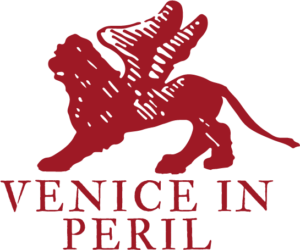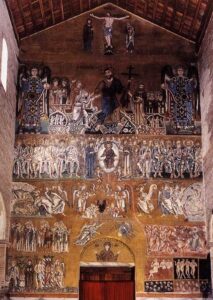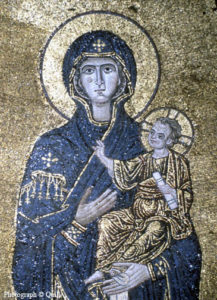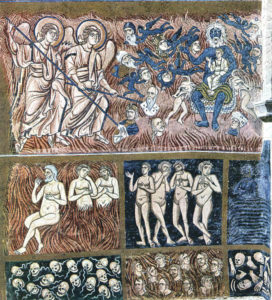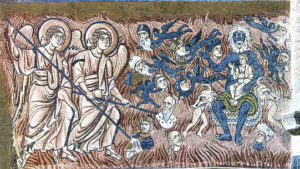Mosaics, Cathedral of Santa Maria Assunta, Torcello
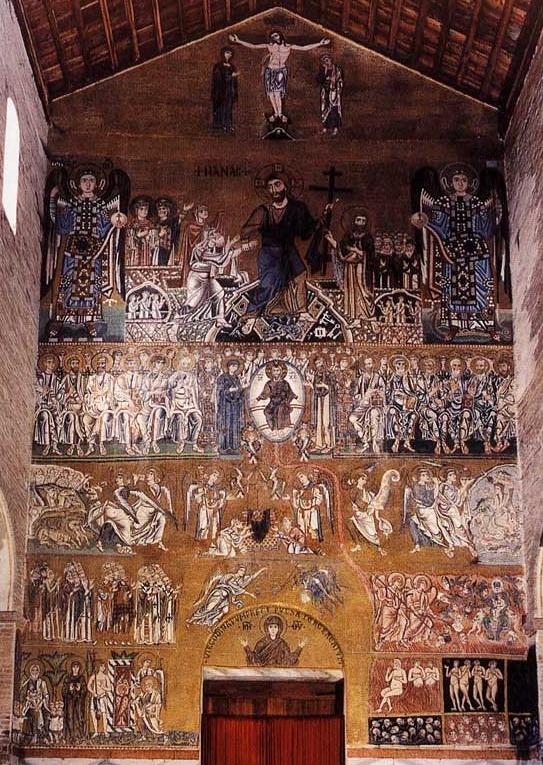
About the project
The famous 7th-century cathedral of Torcello in the northern lagoon was in a poor state of repair by 1977. The walls were spongy with damp which had infiltrated the building from the surrounding brackish marshes.There was significant subsidence and the extensive mosaics, dating to the 11th century and possibly the work of craftsmen from Constantinople, were coming loose from the walls.
An international group of experts considered how best to conserve the mosaics and a condition report of the whole structure drawn up. The next phase involved tackling the urgent repairs to the main apse to protect it from humidity, this was followed by repairs to the roofs, gutters and west wall, while a full programme of restoration was planned. By March 1980 the algae were removed from the columns and the fabric project was concluding.
Mosaicists from San Marco worked to conserve the huge mosaic of the Last Judgement on the west wall which was completed in Autumn 1980 and by Autumn 1981 treatment of the mosaics of the apostles, in the more problematic east end which had suffered worse subsidence, was completed. By August 1983 the golden tesserae in the apse and the Madonna had been treated and with the loan of mosaicists from San Marco and two more from Poland and Jordan the South Chapel was treated in 1984 with works finally completed in 1985.
The Magistrato alle Acque, the authority responsible for the waterways and drainage in the lagoon, undertook state-funded works to protect the Basilica from further infiltration.
In 2002, Venice in Peril and some of the original partners financed scaffolding to enable monitoring of a sample section on the west wall.
How to find it
In brief
- The delicate work to conserve the mosaics involved first using a tuning fork and stethoscope to identify voids behind. They were then consolidated using steel pins, removeable supports and the injection of a mixture of lime, crushed marble and brick. All subsequent repairs could thus be achieved without removing a single tessera.
- The Virgin and Child in the central apse was in such a precarious state that any pressure exerted at the point of injection might have caused large areas of tesserae to break away. So, before the usual consolidation method could proceed without risk, acrylic resin was applied directly between each tessera and a wooden lath support frame screwed into the brickwork beneath.
- This major early project was undertaken by the specially formed Torcello Committee set up by Sir Ashley Clarke, founder of Venice in Peril. It included the US SAVE Venice Committee Inc, the Venice Committee of the International Fund for Monuments (forerunner of the World Monument Fund) and the German Committee. They were subsequently joined by the America-Italy Society of Philadelphia and the Venetians for Venice in one of the most successful privately funded international collaborations of its kind.
- In 2018, following the death of John Julius Norwich, founding chairman of Venice in Peril, a memorial project to conserve the Iconostasis was undertaken with SAVE Venice.
- To visit Torcello http://itorcello.it/visitare-la-basilica-di-torcello
